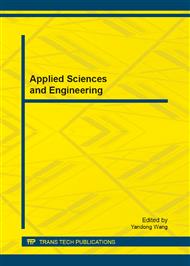p.643
p.649
p.656
p.661
p.669
p.677
p.681
p.686
p.691
Reconstruction of Table-Manipulation Method with Constraints Based on Algebra-Shape-Computer Thought
Abstract:
The table-manipulation method plays a important role in optimizing resource scheduling, scientifically location chosen, task assignment, investment distribution and so on. Most literatures introduction the table-manipulation method used to single thought pattern, for example, the algebra thought model, the shape thought model, or Computer software method, which cruse it is difficult to understand and apply. Therefore, a novel table-manipulation integration approach is proposed by combining the thought of algebra-shape-computer. This builds convenient access among the abstraction, modeling, solving on the practical optimizing problems discussed above.
Info:
Periodical:
Pages:
669-673
Citation:
Online since:
September 2012
Authors:
Price:
Сopyright:
© 2012 Trans Tech Publications Ltd. All Rights Reserved
Share:
Citation:


